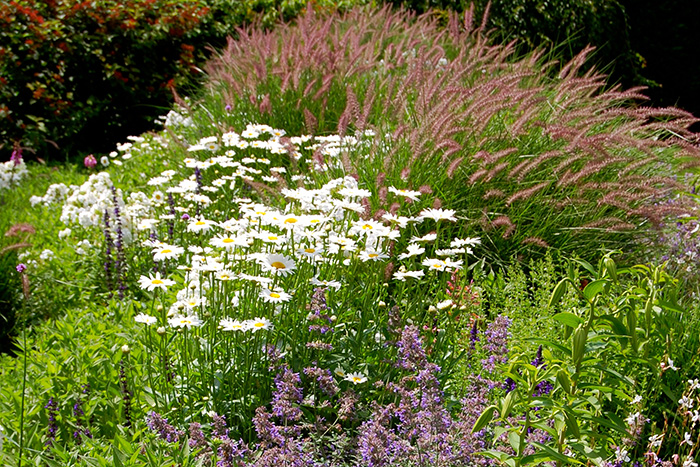Notes from the Garden: Native Plants

Eco-consciousness is no longer just a trend, but a lifestyle. It has had an overall positive effect on landscape design by making clients more willing to take the time to understand the advantages of creating a landscape using native plants. These native plants are simply better suited to a given area where they use less water, fertilizers and pesticides. The recent focus on using native plants should not be considered as just another trend, but really a responsibility to maintain balance within the environment. Native plants along with the right design and soil preparation addresses the full spectrum of sustainability issues as part of its mission, including being water-wise, not using herbicides, preserving natural areas and creating wildlife habitats.
Ensuring a good quality soil before planting will improve the growth of native plants by helping them stay healthier for a longer period of time. It is important to know what the soil needs in order to improve it because most soil problems can be corrected by adding natural organic conditioners. There are different kinds of compost or well-rotten manure that will benefit any kind of soil by adding nutrients and improving drainage. Compost materials or soil conditioners such as peat moss and organic fertilizers should be well mixed into the existing soil to achieve the best results.
Garden borders, meadows and beds look their best when native plants are included. Native plants thrive far better than non-native species because they are more naturally suited to the growing conditions and will never look out of place. The Hamptons have a very relaxed but distinctively tailored style. Most of the properties don’t adhere to the rigid landscaping concept of elaborate structures and formal vegetation. Rather, many properties have a very well organized landscape with groomed lawns, floral beds, borders and structures such as swimming pools to define spaces. Everything is designed to look relaxed but still organized.
Large native trees, such as Flowering Dogwood, which has a wide canopy of white flowers during late spring, or American Hornbeam with its elegantly pointed leaves and vertical narrow canopy, can be combined with native shrubs. These shrubs include Arrowwood Viburnum with clusters of white delicately scented flowers or Inkberry, which have evergreen leaves and white flowers that turn into black berries. These trees can also be combined with native flowers like Lupine which have blue vertical flowers, or Black-eyed Susan, which have daisy-shaped yellow flowers around a black cone-shape center. This particular flower is still attractive even after the petals fall off; and the center cone should be kept until all the seeds have been scattered. Another native flower is Baptisia, with blue water-drop-shaped flowers and stems that grow in a circular bouquet shape.
Native plants can be added to an existing landscape to balance the design. Trees, shrubs and flowers can be grouped into flowing drifts that sweep through an existing border. Positioning native plants in a gradation of heights at the rear of the garden adds depth and visual effect, while native plants of mixed heights can be added for interest along the edges.
The gardens along Wickapogue Road in Southampton, just before it connects to Old Town Road on the south side of the road, are a spectacular illustration of native Hamptons gardens.
Landscape Designer, Writer, and Lecturer; Frederico Azevedo is the CEO of Unlimited Earth Care, Inc., providing landscape design and maintenance to the Hamptons for over 20 years. For more information, call 631-725-7551, or visit unlimitedearthcare.com.



